The empire strikes back: Latour 59 and 62 and why I love Bordeaux
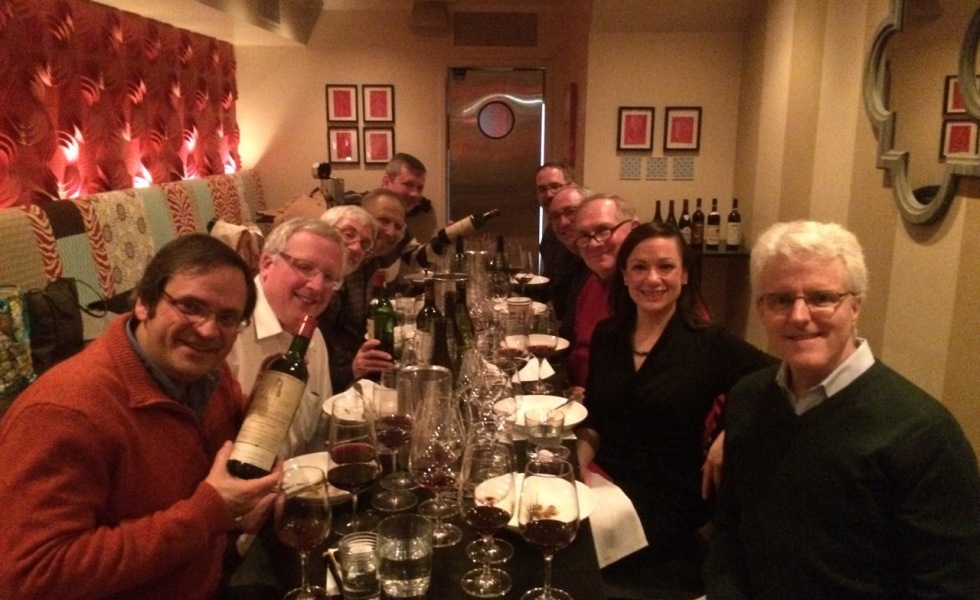
11 January 2015
By Panos Kakaviatos for wine-chronicles.com
Most of 2014 I spent visiting wine regions outside of Bordeaux, from Southern Styria to Nemea, Greece. Like many #wine lovers, I got tired of the escalating prices of top Bordeaux wines. And as much as I love Burgundy, there too, some domains have been jacking their prices up to high heaven. There are mitigating circumstances it is said, from bad weather to increasing demand. In some cases, these are valid explanations. And winelovers should seek out alternatives, from New to Old World, where terroir driven wines are not yet discovered.
And yet, a fabulous holiday dinner with dear wine loving friends on 8 January 2015 illustrates why most wine sold at auctions come from Bordeaux and Burgundy, rather than, say, New Zealand, Chile, Austria or Spain.
Furthermore, as one can read here, not all Bordeaux and Burgundy is excessively priced.
So why the Star Wars title?
Well, when you taste wines like Mouton Rothschild 1986, Margaux 1986, Latour 1962 and Latour 1959, you realize why the empire exists in the first place. Such wines are exceptional and you can see how happy we were tasting and drinking them over a great dinner at one of Washington D.C.’s very best wine friendly restaurants: Ripple.
For over 10 years now – about the same amount of time I have been saying that I plan to publish a book related to wine, but still have not yet done so – I have been lucky enough to know some like-minded wine lovers from my hometown, Washington D.C. For the past few years, we have organized an annual holiday dinner with only top flight wines. So this year, as in years past, each of us brought some fine bottles that we enjoyed at Ripple.
So many thanks to Amy Ray, Ken Barr, Karl Kellar, Chris Bublitz, Randy McFarlane, Paul Marquardt, Howard Cooper, David Zimmerman and to Ken Brown, who did all the legwork to organize this amazing evening of great wines, fine food and excellent company.
We enjoyed quite a lineup, and I confess to getting a bit fatigued towards the end as it was rather impossible to spit out wines like Latour 1959 let alone Chambertin 1999 in a dinner setting. Some of the bottles, including the aforementioned Latour, needed careful opening and thankfully it proved to be a healthy bottle (with no TCA or any other faults). A few other bottles we had were flawed, but most all were excellent.
The evening began with a brilliant set of bubblies. So many people still think that Champagne is not wine. Not most people who consult these pages, of course. But for the general public, you often get remarks like “I like wine, but not Champagne.” Sheesh. Our first flight proved, yet again, how great a wine Champagne can be, with four excellent examples.
1996 Moët & Chandon Champagne Cuvée Dom Pérignon Oenothèque – France, Champagne
If you love Champagne and have the budget, seek this out. Clear aspect, very fine bubbles. Subtle yet echoing and deep aromatics reflecting biscuit and toast but so finely matched by lively citrus aromas all followed through on the palate which began subtle but expanded to a full bodied aspect, with a silky light creamy texture – those fine bubbles tickling the palate – and a precise laser like focus from the vintage’s excellent acidity leading to a long echoing finish. This wine was only recently released, disgorged after 12 years in bottle and has upside “point potential” for all you point chasers. Worthy of further aging in the cellar. (96 pts.)
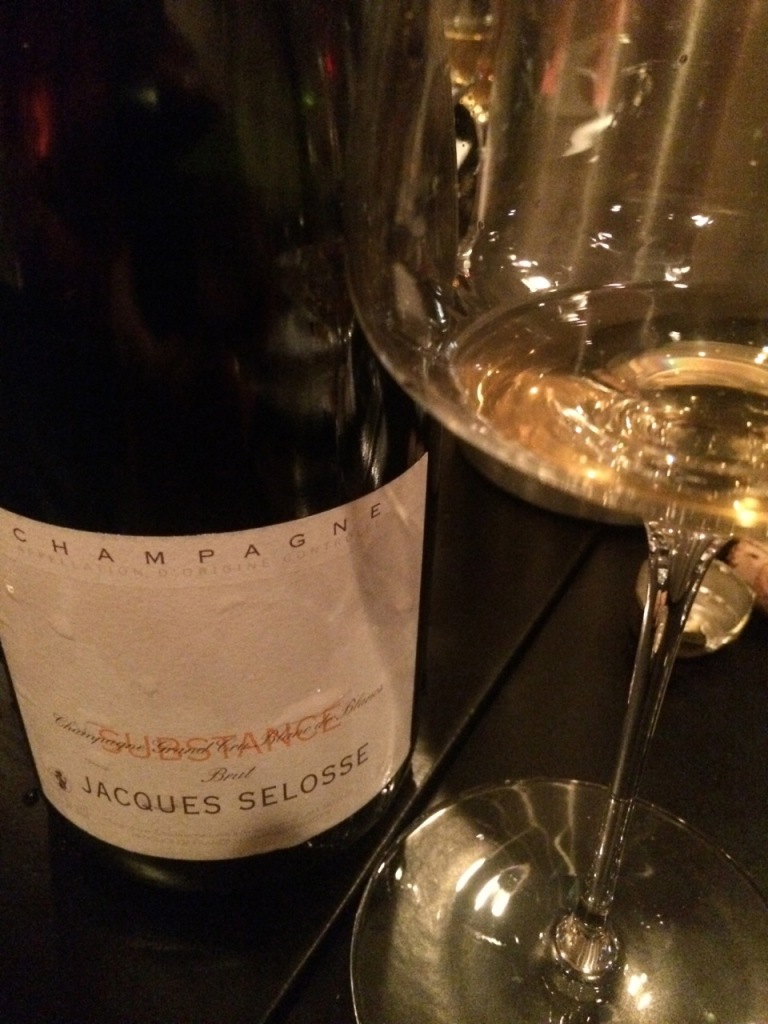
NV Jacques Selosse Champagne Grand Cru Blanc de Blancs Substance – France, Champagne, Avize, Champagne
A style of Champagne that takes some getting used to, given its oxidative aspects. This is made up of multiple vintages reaching back to the mid 1980s. Some critics, like Tom Stevenson, in an article he had published in the World of Fine Wine last year, would prefer a little less oak and a little less oxidation (http://www.worldoffinewine.com/news/cha … lt-4205321). But there is no denying the expressions of fruit and depth of flavors one encounters in this wine, and with most Selosse wines in general. Once you get past the initial note of hazelnut on the nose, the palate exudes quince, mango and other tropical fruit aspects in a vibrant fashion. Full bodied and a long finish, with high flavor intensity. Certainly very different from the Dom Perignon style, for example, but vive la difference and thanks to Amy Ray for sharing this bottle with us. (95 pts.)
1996 Taittinger Champagne Comtes de Champagne Rosé Brut – France, Champagne
Ken Brown suggested half jokingly that we could have decanted this and I agree. Dry and vinous, with vivid red fruit aromatics and flavors, including strawberry, red cherry and cassis. Its full bodied palate manages elegance and refinement given the fine mousse. It seems at this stage at a highpoint and hardly any hint of aging. There is freshness on the finish that lingers long. Made with 70% Pinot Noir including still wine, this is simply superb. (97 pts.)
2004 Moët & Chandon Champagne Cuvée Dom Pérignon – France, Champagne
Last tasted in December 2014 at Hautvillers with Dom Perignon enologist Vincent Chaperon, this 2004 is somewhat closed at this stage and tight. It has freshness and exuberance, high intensity of flavor and aromatics – quite citrus as well as toasty brioche – but leaves an overall impression of “please come back to me in three to five years”. So there is a potential for a “higher point score” … In any case, a marvelous Dom Perignon, miles better than the 2003. But overshadowed tonight by some heavyweights in the bubbly category… (93 pts.)
White Burgundy
This flight seemed like a short respite. Alas one of the two was oxidized beyond merit. But it was a pleasure to savor the Corton Charlemagne.
2007 Vincent Girardin Corton-Charlemagne – France, Burgundy, Côte de Beaune, Corton-Charlemagne Grand Cru
Clear and medium lemon color with a clean nose of vanilla like spice, ripe red apple and tropical notes including mango with ripe yellow melon. Oak derivation but the fruit shines through. Not a hint of premature oxidation, and for my taste, this wine is in a very good spot now. With a creamy, even somewhat butter like, and full bodied palate. Medium plus finish. (92 pts.)
1992 Fabien Coche-Bouillot Puligny-Montrachet 1er Cru Les Folatières – France, Burgundy, Côte de Beaune, Puligny-Montrachet 1er Cru
Too oxidized to appreciate. NR (flawed)
Bordeaux, part 1
Comparing two first growths from an excellent vintage like 1986 was such a treat. Of course everyone harps about the 100 point (Robert Parker score) Mouton Rothschild, but Margaux was lovely from the get go. In the end, I prefer the Mouton, and if I had to choose between the two. Alas, the Figeac 1970 was shot.
1986 Château Mouton Rothschild – France, Bordeaux, Médoc, Pauillac
This could go to 100 but for the comparisons with Latour 62 and notably 59, I will stick to a 98 points wine. Don’t you hate numbers? I do, too, but then again, what the heck. Even though it has been opened the day before, to give it air, the wine is on a very slow evolutionary track with black cassis, dark fruits in its enveloping and pronounced aromatics that grew more and more complex as the wine sat in glass. The palate is full bodied without being so in a “New World” fashion, that is to say, elegant and refined and yet so tannic and powerful at the same time. Going back to the Margaux, Mouton just seems to have so much more “going on” in this vintage. It is a beguiling wine that will reward further aging (and it has the tannin to age for a loooooong time) in your cellar, but can certainly be thoroughly enjoyed today. I would suggest decanting. It was interesting to return to it, after tasting Latour 1959 and 1962, and sense its sheer youthfulness and vigor by comparison – and what holds such promise for further cellaring. (98 pts.)
1986 Château Margaux – France, Bordeaux, Médoc, Margaux
Using points now is getting a bit ridiculous but let me just say that our table had endless discussions over how much better or not the Mouton 86 was as compared to this Margaux. Off the gate, very floral, lead pencil like mature Cabernet, redcurrant fruit, more red than black, and showing evident structure on the palate, which was subtle in its refinement and texture, leading to a long finish. At first it seemed to me to be a wine that is better to drink now than the Mouton 86, but since we basically popped and poured, time in glass revealed that the Mouton – with time in a carafe, for example – is sublime today. In any case, Margaux 1986 is an excellent wine. (95 pts.)
1970 Château Figeac – France, Bordeaux, Libournais, St. Émilion Grand Cru NR (flawed)
Paradise (Flight of the Night!)
Two Latours, two older vintages, two incredible treats.
1962 Château Latour Grand Vin – France, Bordeaux, Médoc, Pauillac
With time in glass, this wine got better and better and I am going well above the average point score on Cellar Tracker, because this particular bottle, thank you Chris Bublitz, started singing with time in glass. Not literally of course. It was hard to tell the color but medium garnet with bricking on the edges, this wine tasted younger than its years – with plenty of tannin and structure, but oh so accessible and oh so smooth. More cool blue fruit rather than red, with high acidity to match the ripe fruit. 1962 is an underrated vintage, coming on the heels of the exceptional 1961, more experienced tasters point out. The pronounced flavors included tertiary notes of cedar on the very long finish. Not quite as long or as sweet as the 1959, but this was just amazing. (98 pts.)
1959 Château Latour Grand Vin – France, Bordeaux, Médoc, Pauillac
Perfection? Does it exist? Oh sure, in this case, from this bottle – with great friends and fine food from chef Marjorie Meek-Bradley at Ripple and great conversation… This is what it is all about. Going back and forth between the 1959 (thanks so much to David Zimmerman for bringing this) and the 1962 (thanks so much to Chris Bublitz for that one), I would agree with Howard Cooper to reply to the question Which one is better? “It depends on which one I am drinking at the moment.” Indeed. I thought that the 1959 was served slightly warm but whatever the case may be it was a revelation, with vivid and pronounced flavors including crushed tobacco and even what I would call ultra refined “vintage port like dark fruit”. It had a sweetness about it that drew you in, without being sweet at all (in terms of actual chemistry). The texture was all velvety, the feeling was of sap and richness – oh that juicy mid palate I could not get enough of – but so well “sculptured”. It was a magical time to drink this wine, which tasted younger than its vintage suggested, although the tannins were resolved. Full bodied with a seemingly interminable finish. (100 pts.)
Fine Burgundy
A fascinating comparison between two Chambertins by Rossignol-Trapet in two very different yet consecutive vintages. These two wines alone were fantastic. Alas the Claude Dugat seemed monolithic and hard.
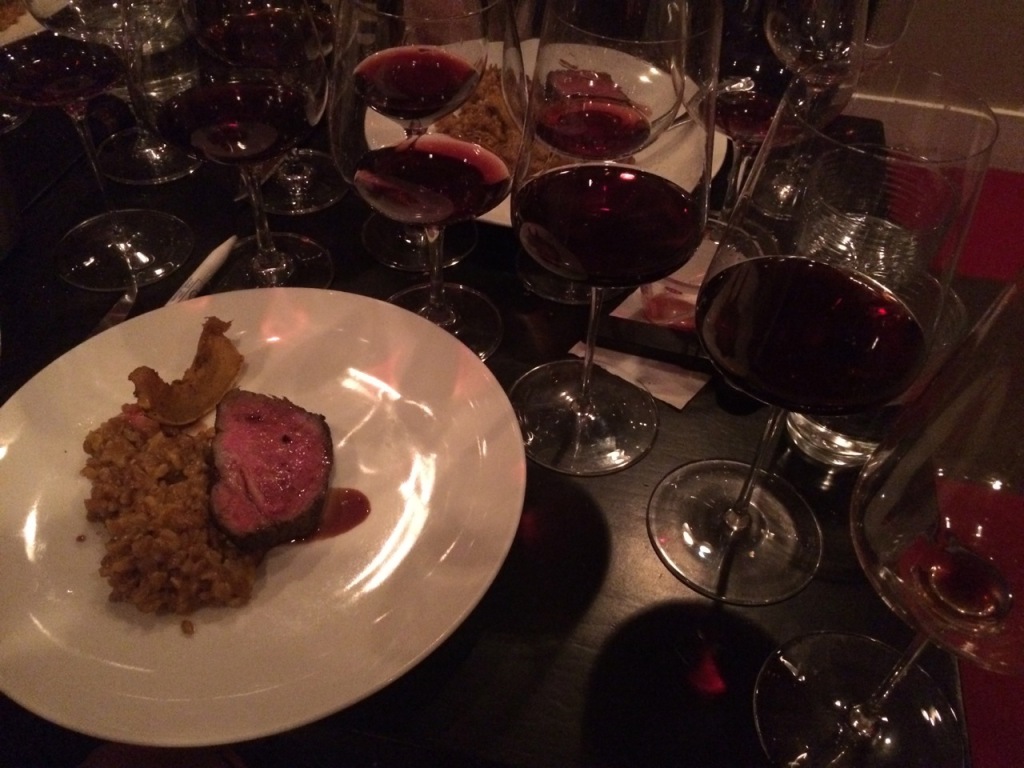
Great wines and great foods: kudos to chef Marjorie Meek-Bradley of Ripple. Her NY Strip loin with butternut squash went very well with the Burgundies: just one example!
1999 Domaine Rossignol Trapet Chambertin – France, Burgundy, Côte de Nuits, Chambertin Grand Cru
The heights of the red wine tonight were strictly in the Bordeaux category, but this Burgundy was seductive, ripe-Pinot based Chambertin. Hard to not love. On Facebook my spontaneous reaction was that this wine was sexually attractive. Why is that? I was probably getting so high from the 1959 Latour… Anyway, conveyed silk and concentration with subtly spicy cherry aromas and flavors and a hint of perfume like musk. Lovely texture and density on the palate, that beckoned eager further drinking and I obliged. The long finish was marked by sweet, ripe tannins and fine lift as well. Absolutely lovely. (95 pts.)
1998 Domaine Rossignol Trapet Chambertin – France, Burgundy, Côte de Nuits, Chambertin Grand Cru
What a treat to taste this side by side with the 1999, a vintage that is sweeter and riper. But I loved the 1998 cool blueberry like fruit and freshness. Full bodied and nuanced on the mid palate, with a long, savory finish that is not quite as seductive as the 1999. In any case, both are great. (94 pts.)
1998 Claude Dugat Charmes-Chambertin – France, Burgundy, Côte de Nuits, Charmes-Chambertin Grand Cru I was rather certain that there was something wrong with the wine, as it tasted hard and monolithic to me. Yet Ken Brown said that the next day – as still much wine was left in bottle – it was tasting better. Perhaps it just needed time. In any case, note reserved.
Italy: By the time palate fatigue setting in, but a fine flight
1996 Falletto Barbaresco Riserva – Italy, Piedmont, Langhe, Barbaresco
The aromatics included potpourri, cherry and licorice, and yet found the wine to be quite tannic and a bit hard. Perhaps I did not give it enough time in glass. In any case, black fruit with tertiary notes of tar, leather and again dried flowers were poking through and the tannin did hold up well against the rear New York strip but I much preferred the Barolo in this flight. Ken Brown who brought home the last 2 ounces or so of wine said that it was “beautiful” the next day and suggests cellaring for another 10 years. In any case, not so easy to judge, especially since we had already gone through some amazing Champagnes, Bordeaux and two great Burgundies right before. (93 pts.)
2001 Azienda Agricola Falletto Barbaresco – Italy, Piedmont, Langhe, Barbaresco
Of the three Italian wines, I found this to be quite good, but the least interesting at this stage. While it conveyed red fruit aromatics, and medium flavor intensity of blackberry and cherry and spice, it came across as slightly closed in and tannic, even more so than the 1996. I would hold off for a few years before opening this one. Again, maybe I did not give it enough time in glass to properly appreciate. (90 pts.)
1997 Giacomo Conterno Barolo Riserva Monfortino – Italy, Piedmont, Langhe, Barolo
Popped and poured and it really needed some time in glass to come together but it did and it was terrific, and perhaps merits a higher score. In any case, I loved its dry flowers and black cherry aspects that enveloped the juicy and savory mid palate in particular. We had come to quite a bit of wine by this time, and my notes were less precise, but the long finish was impressive and bodes well for further cellaring. (94 pts.)
Sauternes and Barsac
A surprisingly fine performance from Suduiraut in a vintage not known for being necessarily great in Sauternes. Alas the Climens 1971 seemed far too evolved by the Climens 1988 was excellent.
1970 Château Suduiraut – France, Bordeaux, Sauternais, Sauternes
I am not sure what kind of vintage 1970 was for Sauternes but Suduiraut did a masterful job, and this was a very good bottle. It was succulent and rich, with black tea like notes from the botrytis, coupled with dry fruit and honeyed pear, with hints of white floral aromas. I would say a textbook Sauternes that is fully developed and ready to go although the finish was just medium to medium plus. (94 pts.)
1988 Château Climens – France, Bordeaux, Sauternais, Barsac
Coming from half bottle, this wine was both rich and robust yet elegant and with energy and focus. The ginger and black tea notes coming from the botrytis were nicely paired with with white peach and very ripe pear. The overall impression was subtle elegance and seduction that kept me coming back for more. A very long finish bodes well for further aging. (95 pts.)
1971 Château Climens – France, Bordeaux, Sauternais, Barsac
Alas it seemed to me that this bottle was too oxidized to truly appreciate. NR (flawed)
Ice Wines
1998 Von Schubert Maximin Grünhäuser Herrenberg Riesling Eiswein – Germany, Mosel Saar Ruwer
Another case of a bottle that seemed too oxidized to truly appreciate. I am not so familiar with the producer and welcome comments on the wine. In any case, when compared to the 1993, the 1993 was youthful and bright – and delicious. NR (flawed)
1993 Von Schubert Maximin Grünhäuser Herrenberg Riesling Eiswein – Germany, Mosel Saar Ruwer
I did not take careful notes but very much enjoyed the pure fruit expressions of this ice wine. I just remember this as successfully balancing crisp fruit like white apricot with intriguingly delicious tertiary notes of spice and honey – all very well balanced by acidity, lending precision and structure. A delectable wine aging very well, imparting more youth than its 20+ years suggest. (95 pts.)
A superlative dinner, many thanks to the staff at Ripple for their excellent service and to the top notch cuisine of executive chef Marjorie Meek-Bradley. Until next year, dear Washington Winos, for another holiday dinner!
Category: Blog Tagged: Barolo, Bordeaux, Burgundy, Chambertin, Climens, Latour, Margaux, Mouton, Ripple, Suduiraut
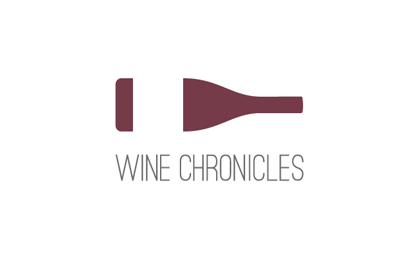 Wine Chronicles
Wine Chronicles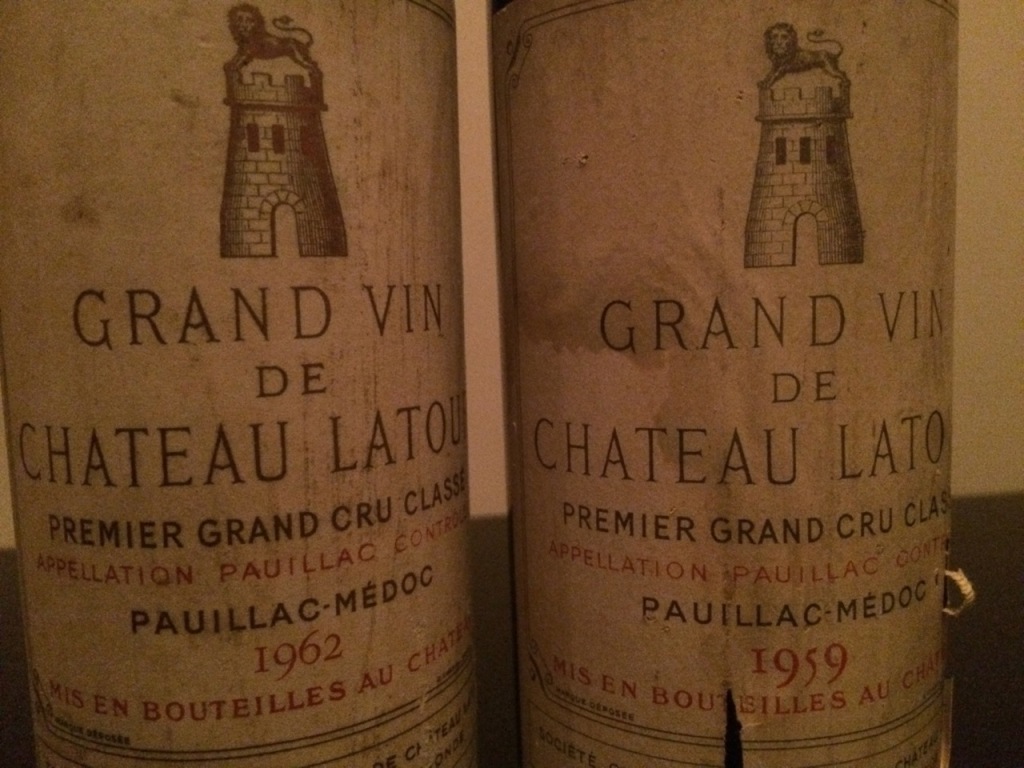
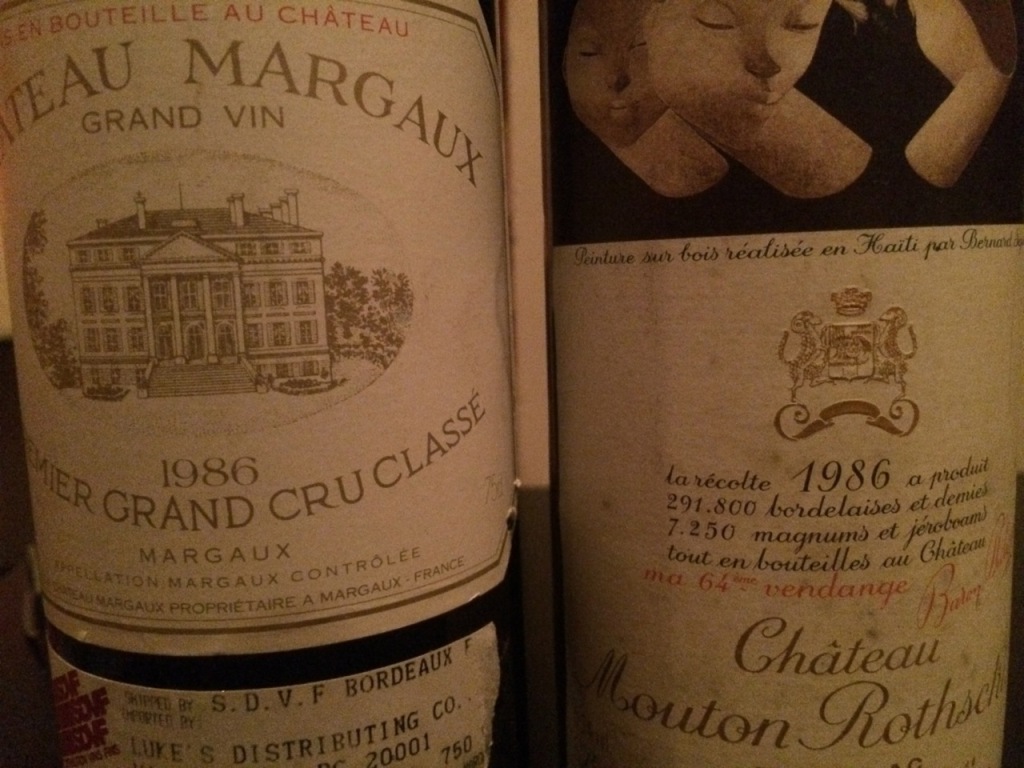
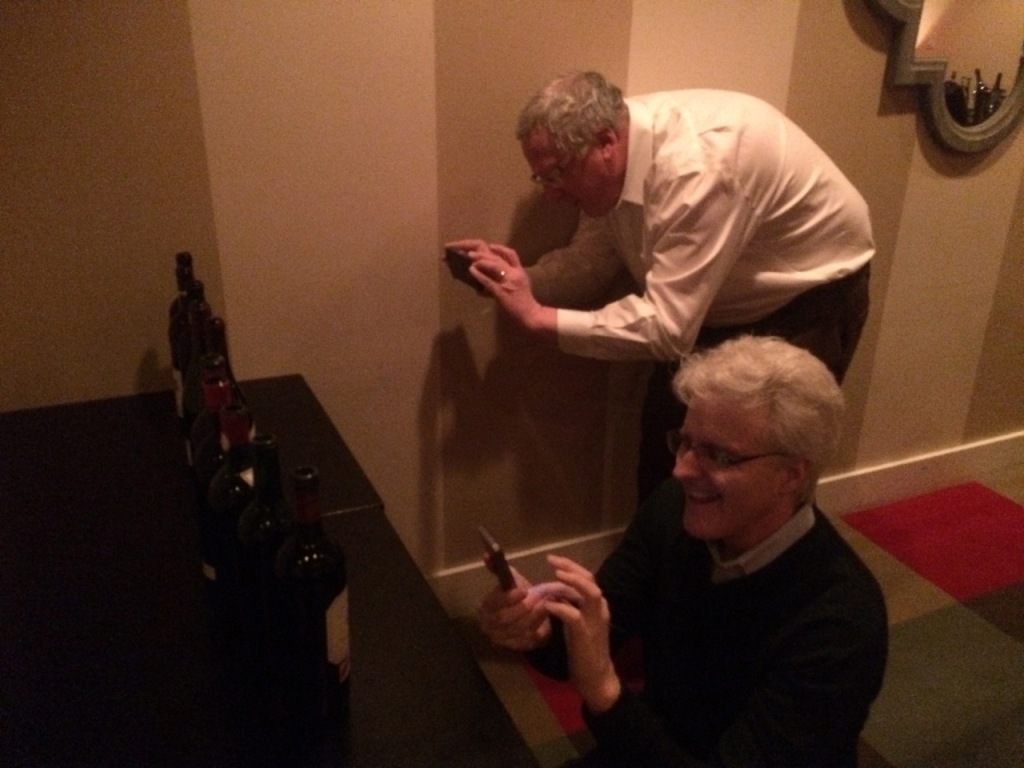
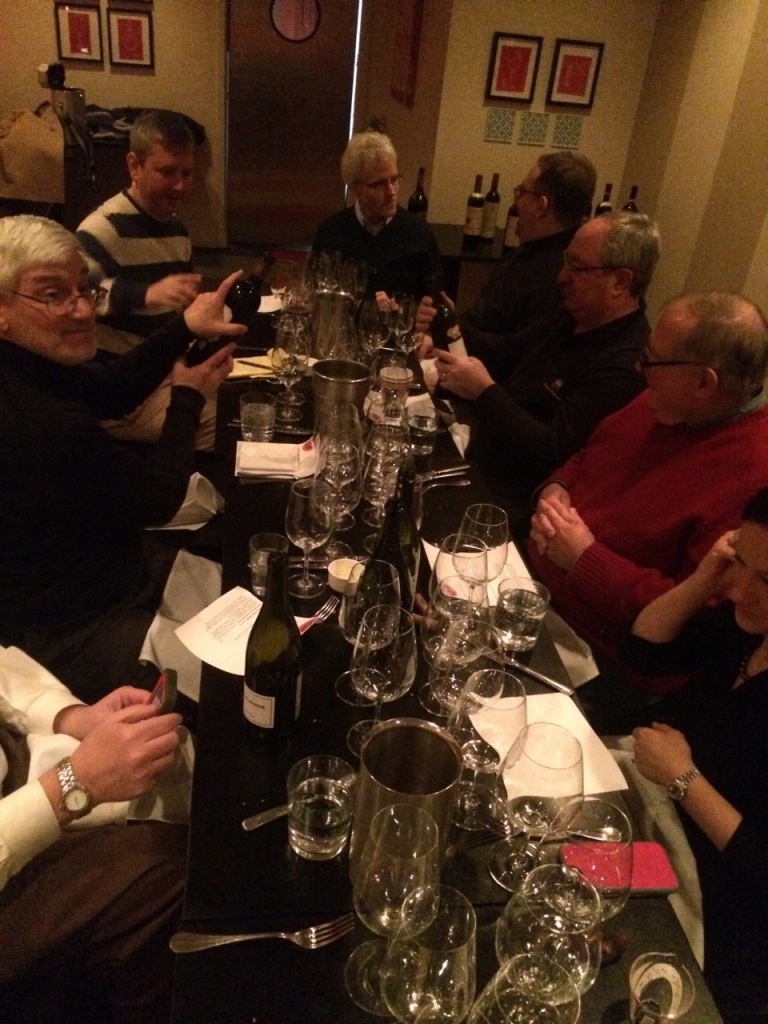
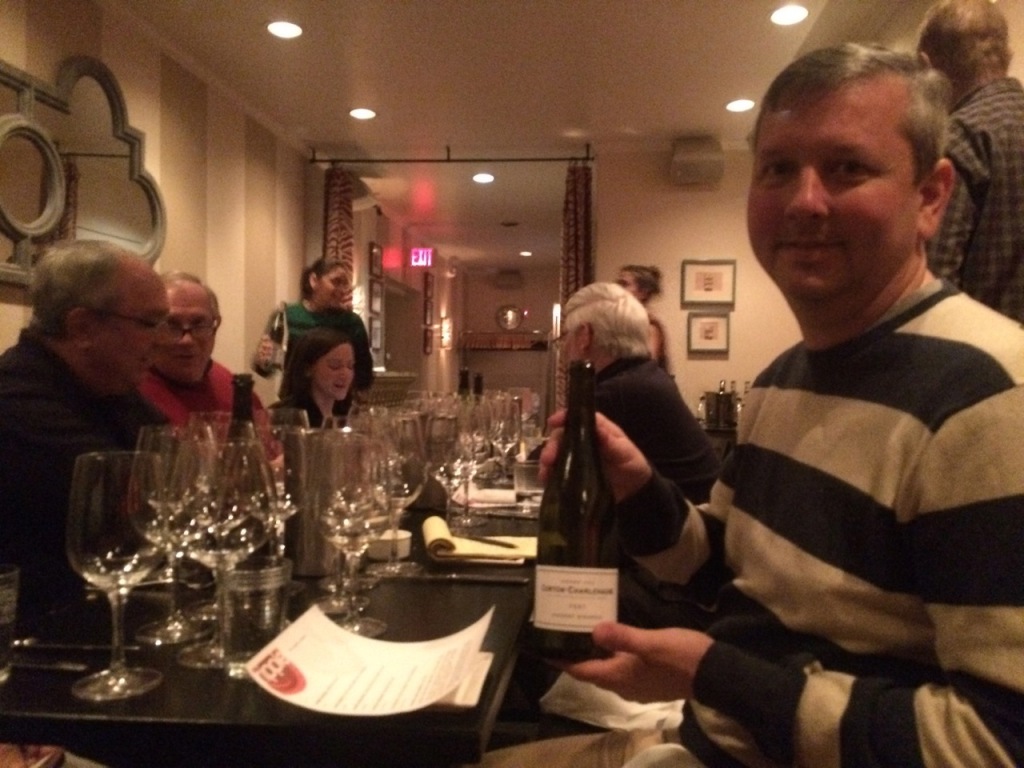
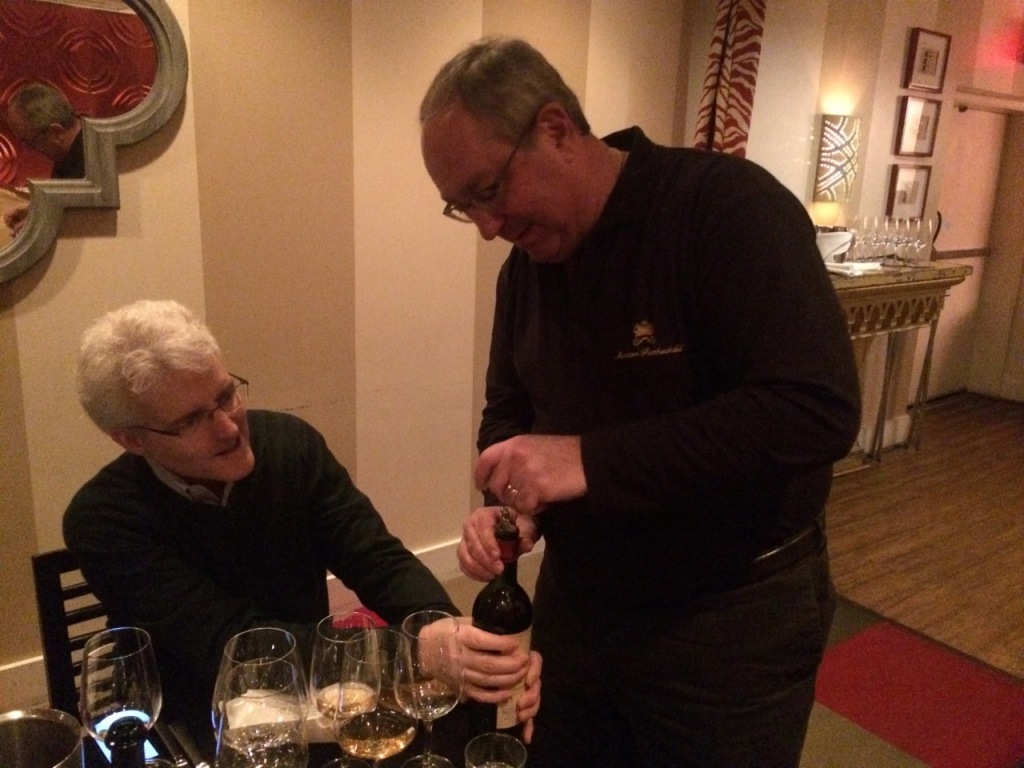
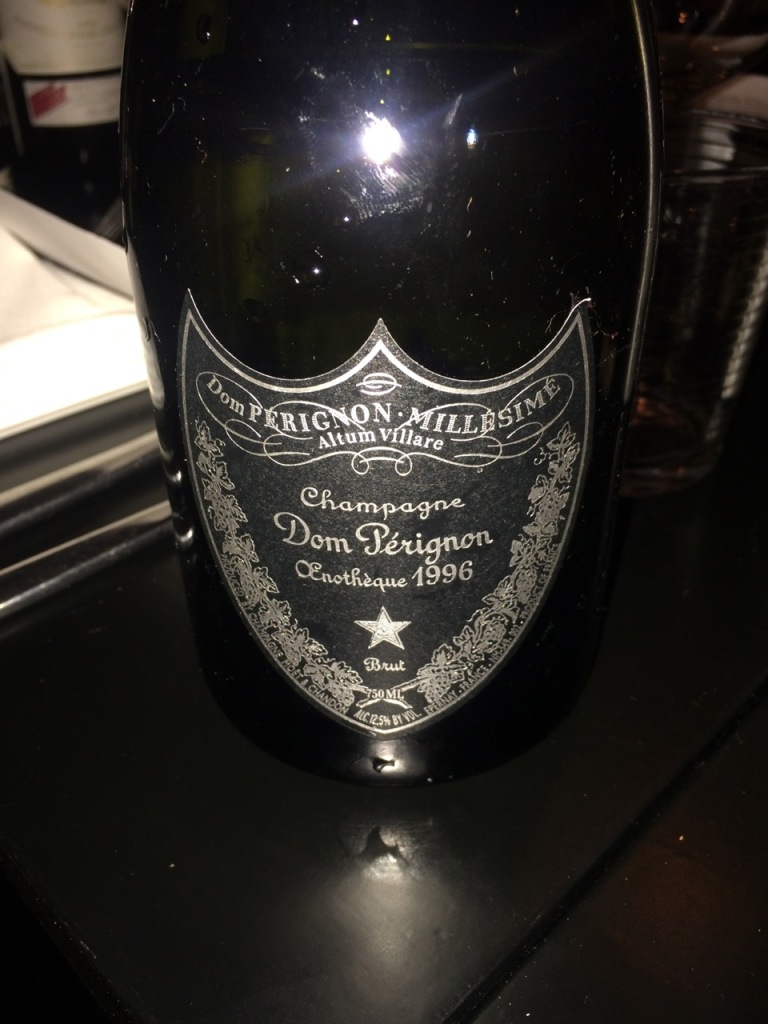
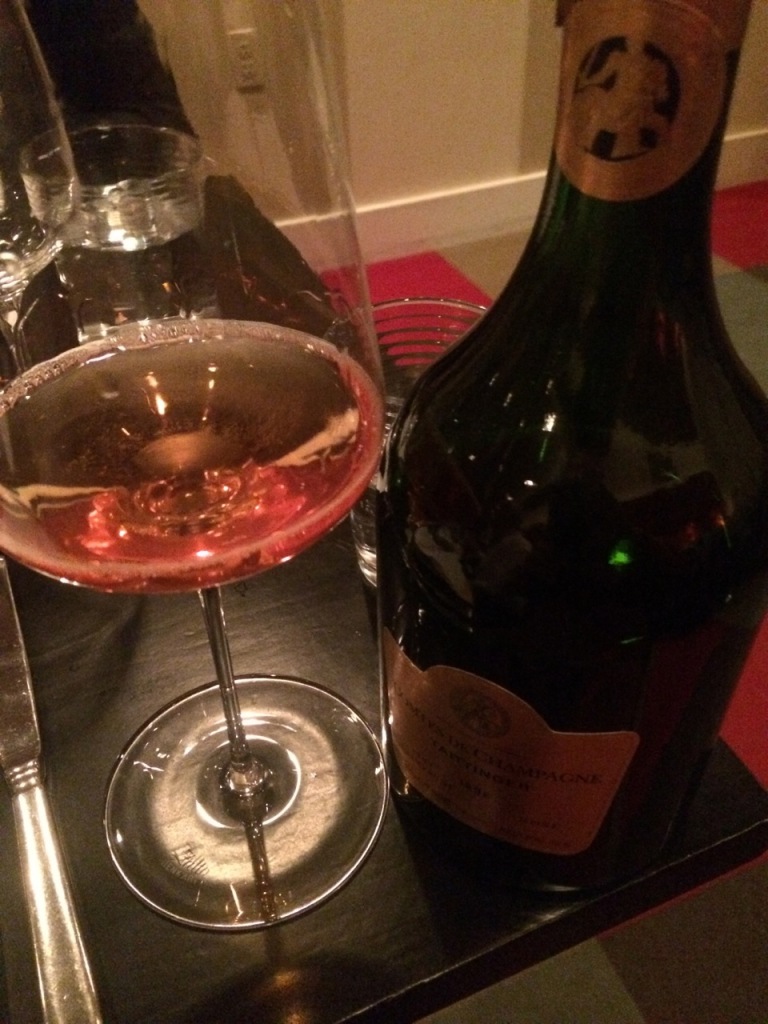
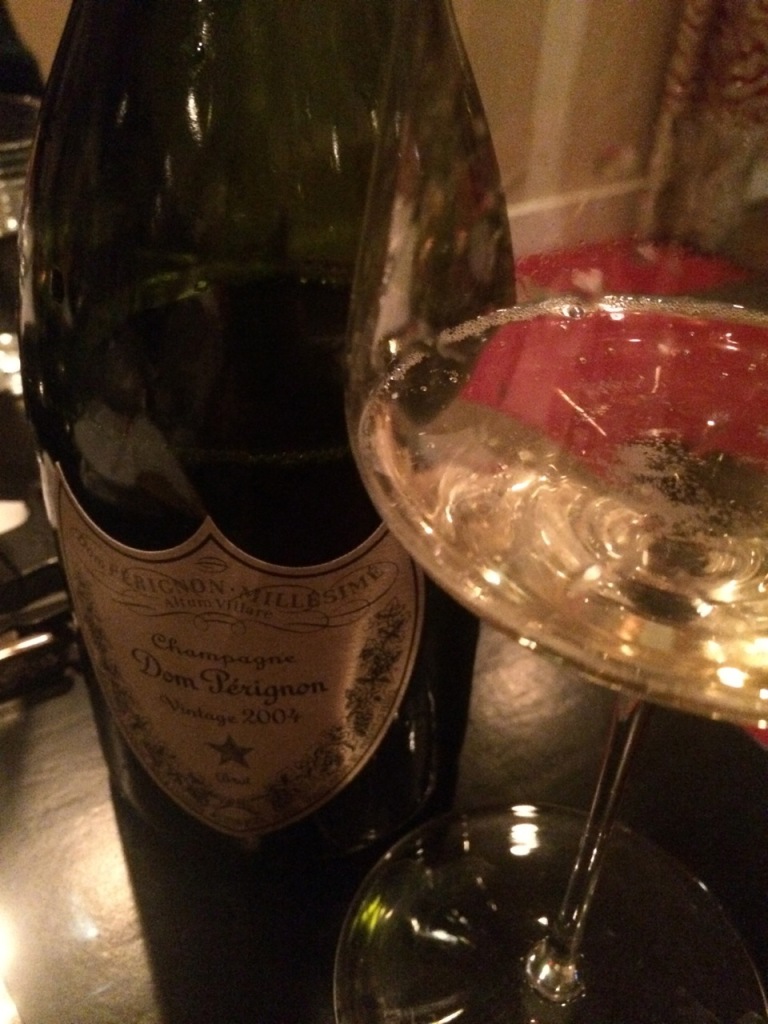
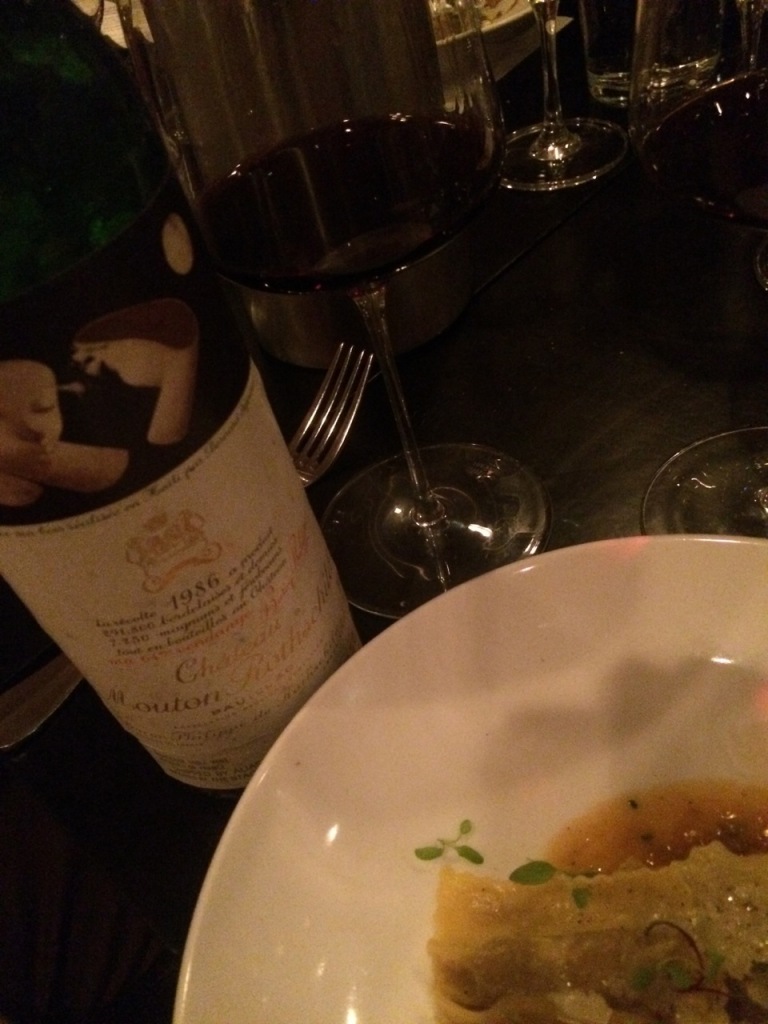
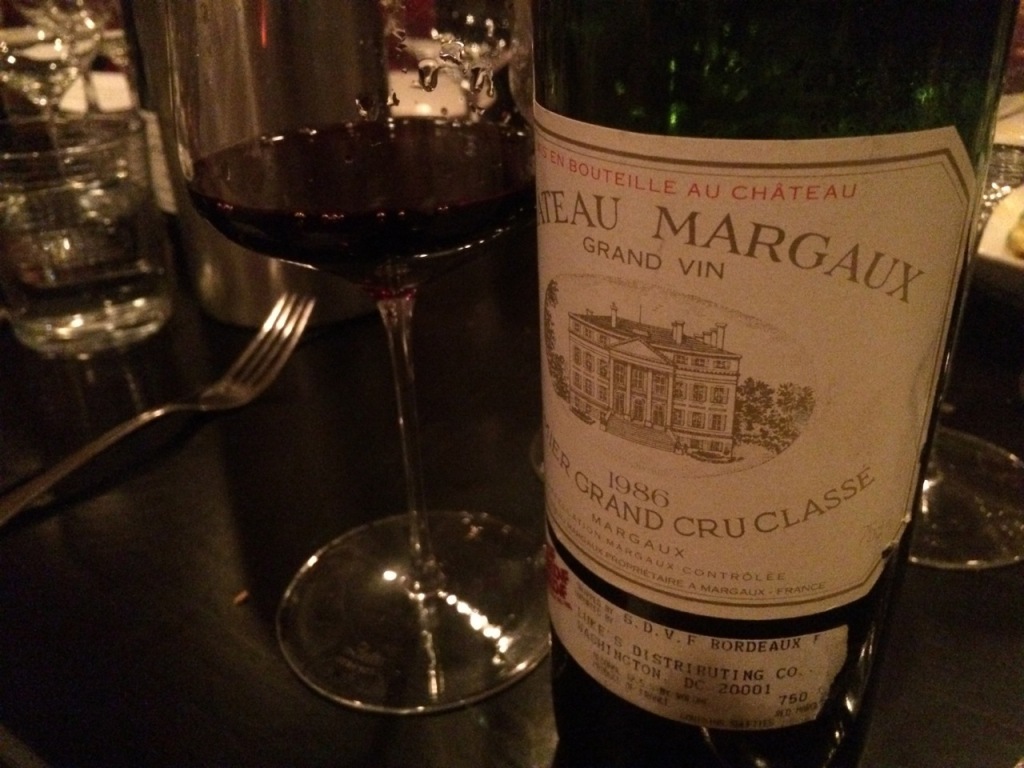
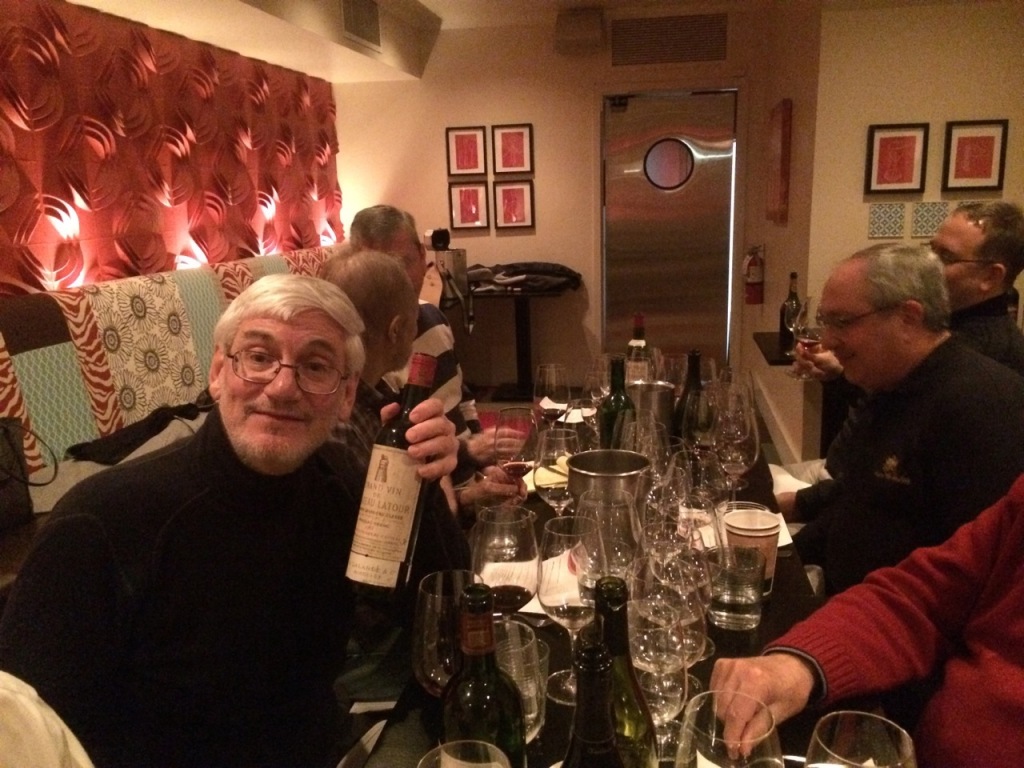
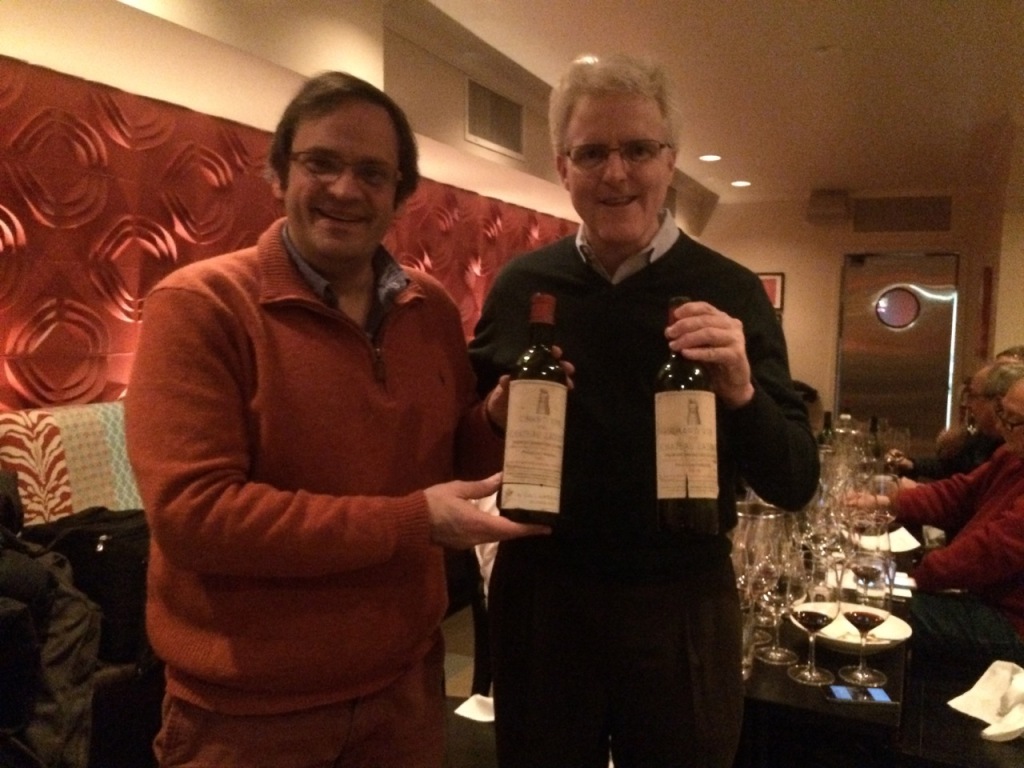
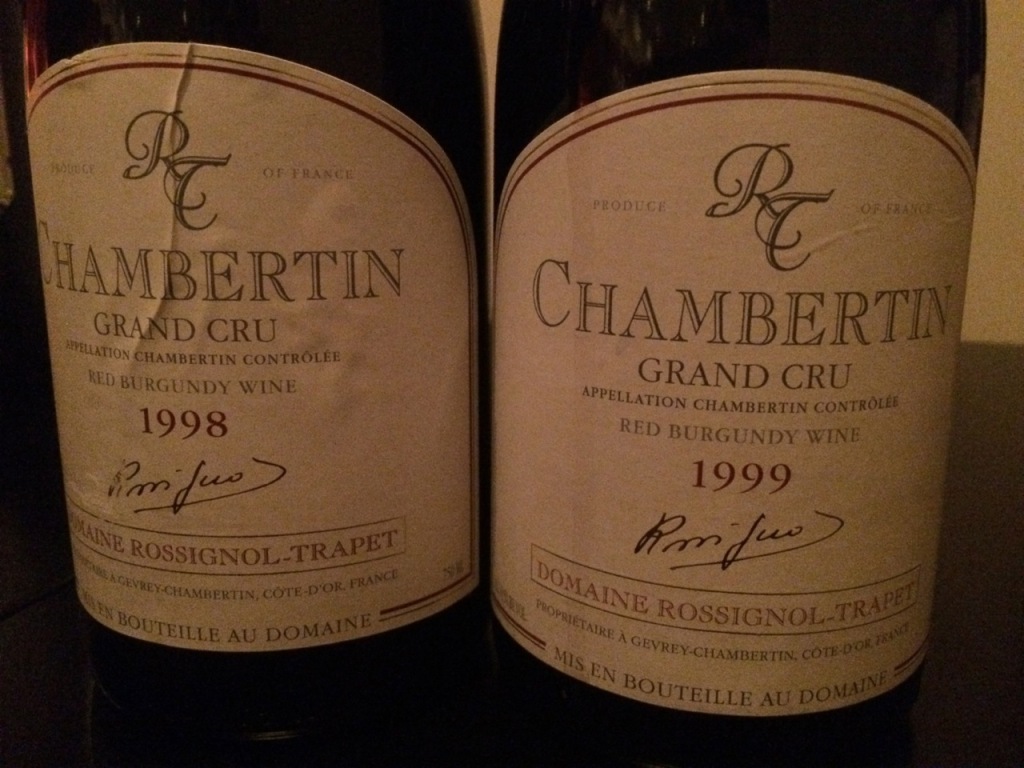
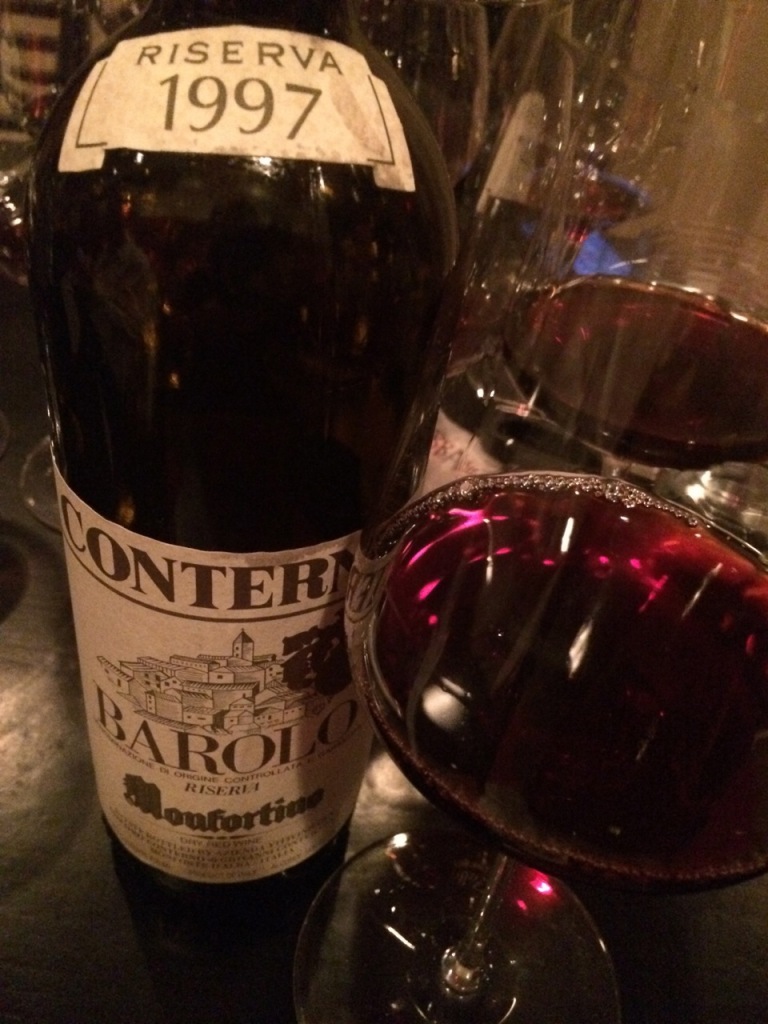
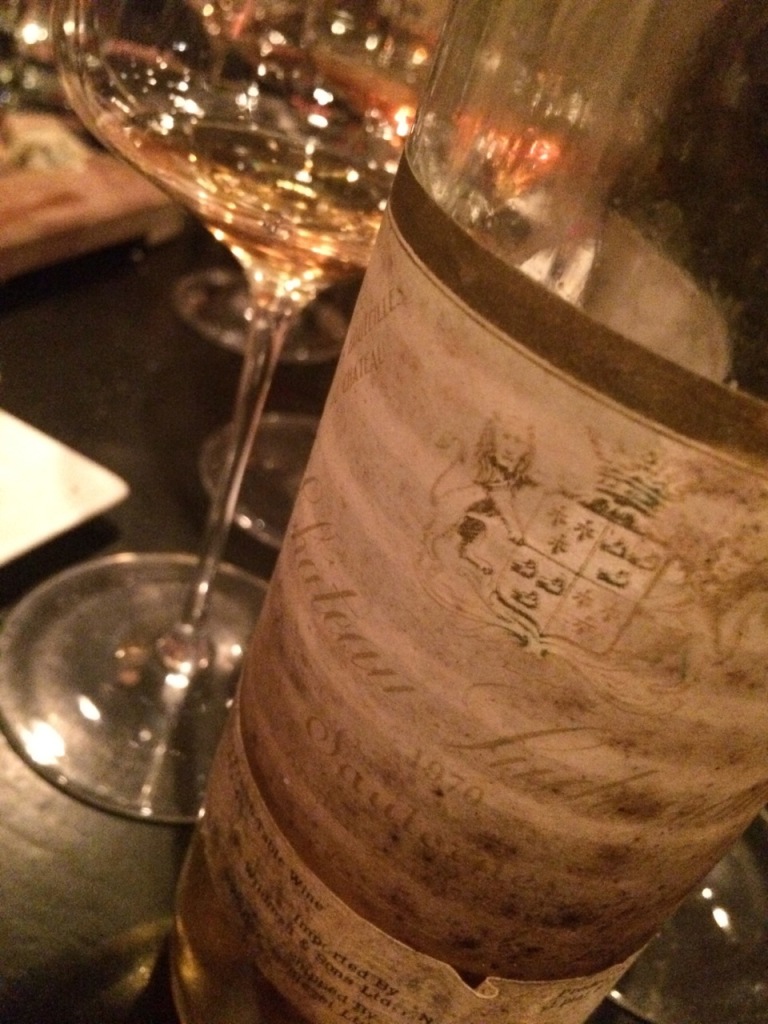
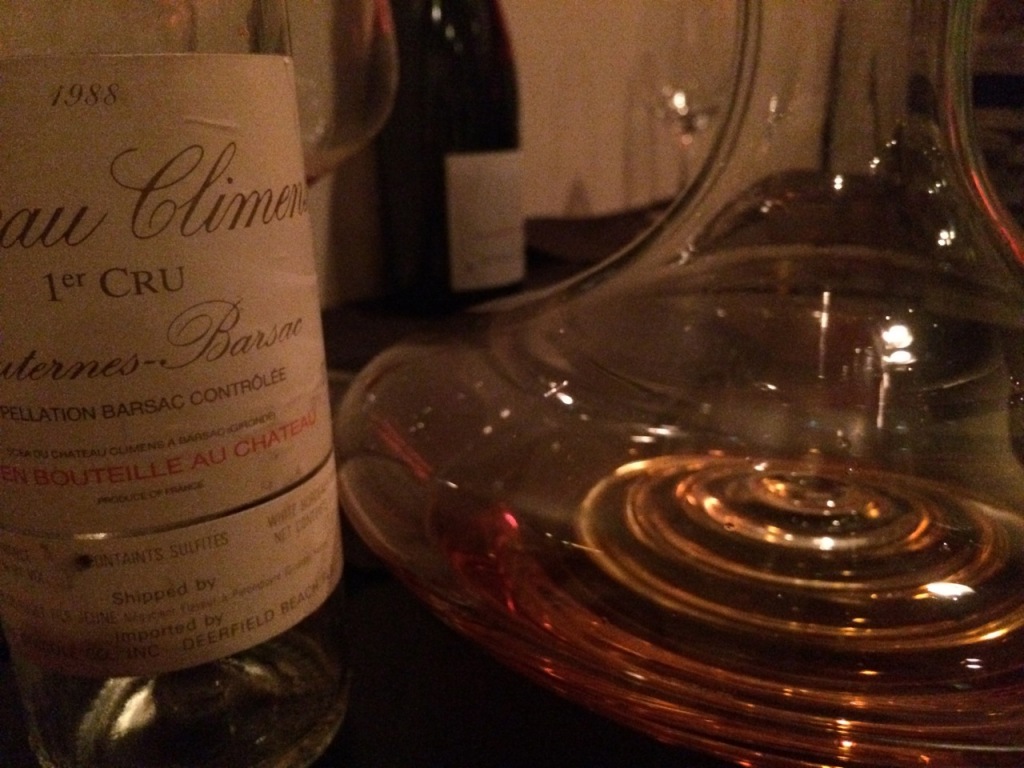
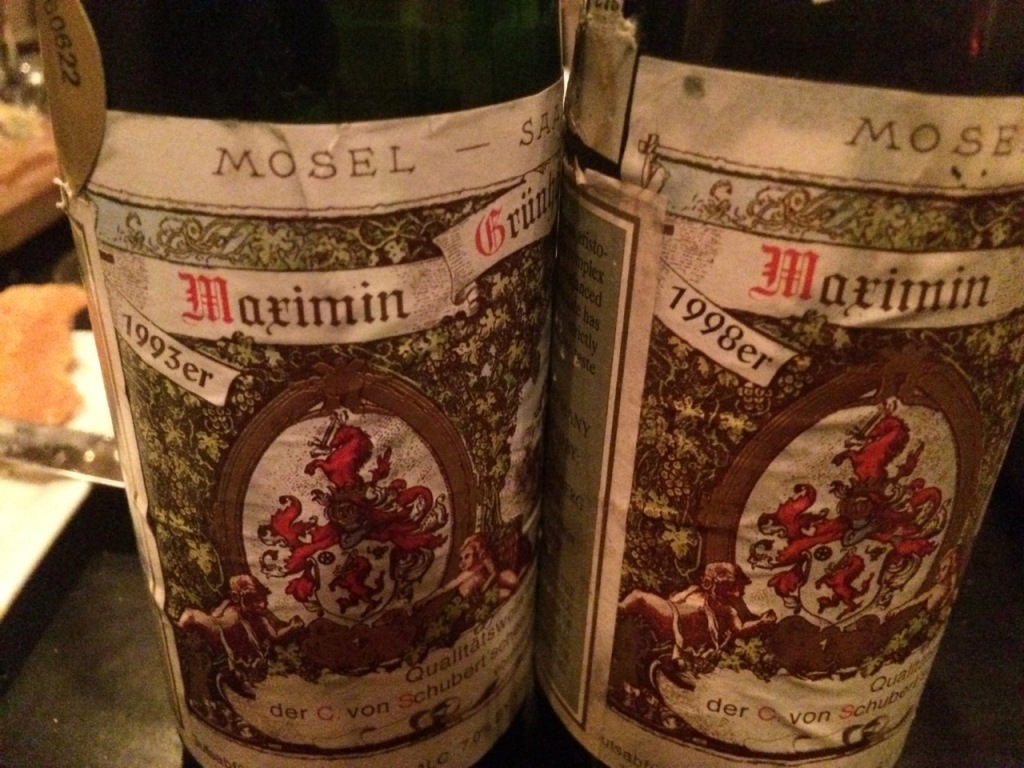
Share This